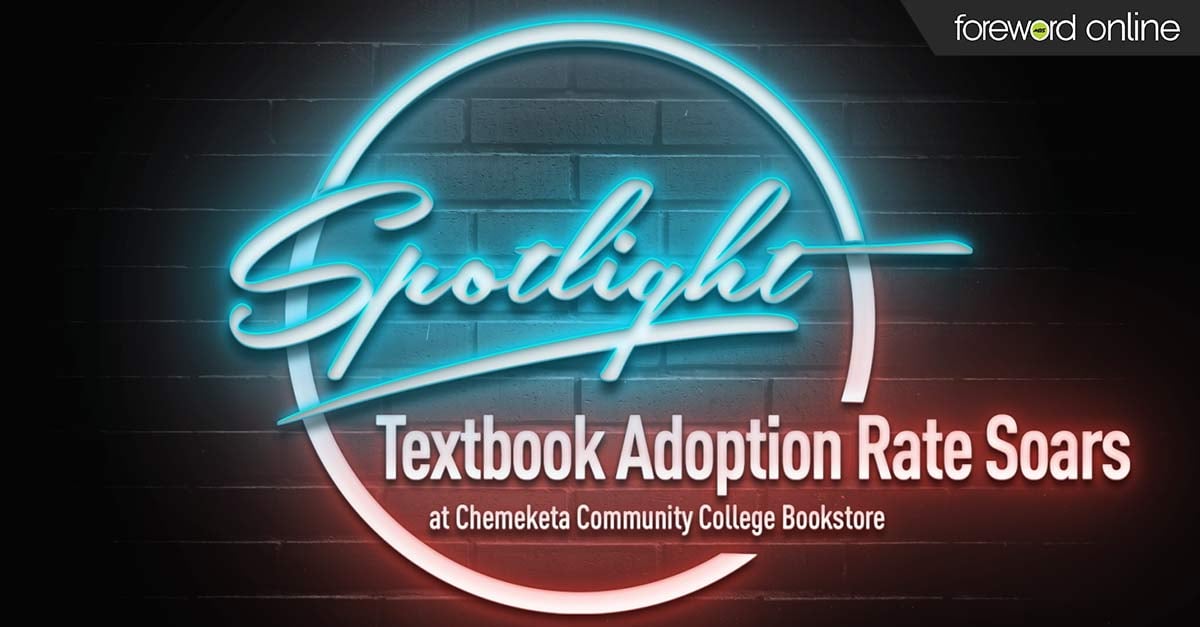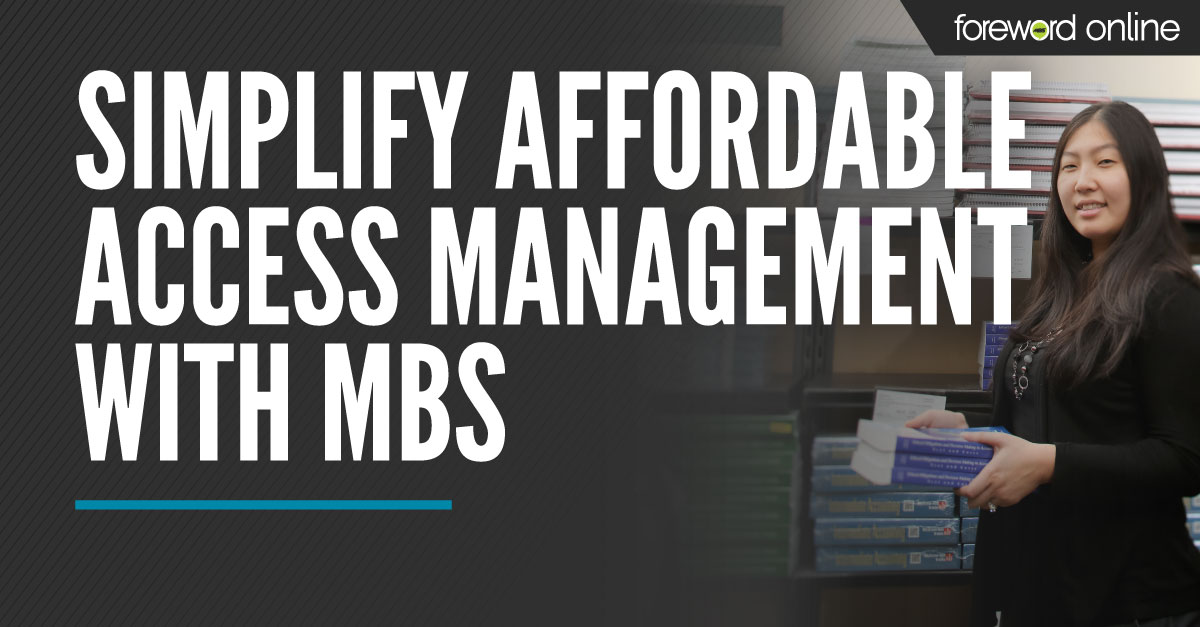With an adoption completion rate of 99.92% seven weeks before the start of spring term, Chemeketa Community College is inspiring. Recently, we sat down with Chemeketa’s Director of the Bookstore and Auxiliary Services Meredith Schreiber and the Bookstore Course Materials Coordinator Bonnie Perry to discuss their approach to faculty adoptions and student affordability.
 How has your textbook adoption process changed?
How has your textbook adoption process changed?
Schreiber: I have been doing this job for almost seven years, but I didn’t come from a textbook background or the college bookstore industry. I was confused as to why adoptions weren’t done on time. We talked about the barriers and challenges associated with textbook adoptions.
Once I had a good understanding of the problem, we invited the general education deans to lunch and sat down with them to talk about adoptions. We told them about the problem and why it would be advantageous to all us if we could figure out a way to get the adoptions done on time.
The deans really took it upon themselves to solve the problem. They worked with our LEAN Development Team. I don’t know if every campus has a LEAN Development Team these days or not, but ours is pretty amazing. They took the problem apart with the academic work group on campus and flipped the system.
Working with Bonnie Perry, my textbook coordinator, they created a standard list of course materials for the upcoming term. The list includes the standard materials that have been used in the past and there is another list with the instructors who might want to use a different book than they used before. If instructors want another book, they are given a deadline that deans help enforce so we do not get a lot of changes at the last minute.
The deans basically created a master list of authorized textbooks. If faculty want to change what’s on the list, they are welcome to do that, but it has to be done within a set timeline. And because of that, we can start going forward with uploading our adoptions for the upcoming term after the faculty deadline. That’s how our adoptions are up to 99% seven weeks before the term starts.
What approach did you take when speaking with the deans?
Schreiber: When I was hired I did the whole profit and loss presentation. I came from a retail background. I knew about maximizing profit and how to speak that language. The CFO at the time, currently our president, took me aside after my second interview and said, “Meredith, profits are fine, but it is really about relationships at Chemeketa.” I took that to heart. I am really much better at relationships than I am at spreadsheets.
We really took the time to develop a really good rapport with the deans. They saw our genuine commitment to textbook affordability. We also started our textbook affordability group at that time to support the campus’ affordable learning initiative. The deans on the committee would lay out their goals, and I would say matter-of-factly that this was all fine, but none of it could really happen before we could fix the adoption problem. I explained that we couldn’t truly have affordability without on-time adoptions. And, it has proven to be true.
I think the mindset toward changes like this makes a difference. Our executive team works very hard on the outward mindset. We’ve gone to a lot of outward mindset trainings which really makes us want to help other people and see their perspectives and what we can do to contribute to the solution. The siloed academic world exists here, but we kind of just ignored it. I think that was a big advantage.
What are some of the benefits of on-time adoptions?
Perry: I think something that will have a lasting effect was proving to the instructors was how important adoptions are. At the time we made these changes, I was on the President’s Advisory Committee. I let them know that because of our new system, I was able to get my wantlist going so much earlier that I was able to compete with the semester schools.
We more than doubled what our bin normally was. I would not have been able to brag a year or two ago that right now (after just a couple of days), I have almost $30,000 books in my bin. Because of that, our percentage of used books we can get for returns is so much better than it was.
We are able to do SimpleSource now — which is working great. Even as a quarter school system, we can maximize the bin and hold system and be ahead of schedule to get our books. Also, our returns and inventory management has strengthened because we’re not wasting a tremendous amount of time chasing things or wondering whether we can send a book back. It has made our inventory management much stronger.
It has also done a phenomenal job of reducing the cost of textbooks in numerous ways, but in return it has killed our margin. We have to make up for it in other ways.
Schreiber: Another great thing about our new system and the relationship we have with the deans is that if there is a change at the last minute, it doesn’t cost the store. We say, “We can do that, but this is what that change costs.” Whether it is second day air, changing the shelf tags, doing returns, or communicating with students, we don’t absorb that cost anymore. It goes to the department making the change.
Perry: They have been very good about it. They come to me and say, “Bonnie, is it possible to do this?” I say, “Yes, it is. Here’s what will happen.” We never say no. If they really want the change, they will gladly do it, and they still like us. It’s amazing.
What do you think student savings means to a student?
Schreiber: There are a lot of ways we can save students money, such as with inclusive access or through the Chemeketa Press. But, I think it is important to remember the student’s point of view. For example, I got into a discussion with a student who didn’t need the optional loose-leaf math book that came with the inclusive access package. He was very upset that he couldn’t sell it back. I said I couldn’t per the contract. The book had been listed as optional and it only cost $33.50.
The look he gave me was one that clearly said I didn’t understand the value of $33.50 to him. And he was right. I hadn’t been considering his point of view. I apologized and said you are absolutely right. It wasn’t for me to tell him that it was only $33.50. My perspective was that $33.50 was so much better than $200, but for him that could be a tank of gas or having food for a week.
In this economy with the price of rent skyrocketing, all that really matters is how can I make course materials as affordable as possible for students. Students want the process of purchasing textbooks to be quick and easy. They also want the books to be an important part of their course and to cost as little as possible. So that’s what we try to do. It may backfire someday, but I am willing to take that risk.
You mentioned earlier that your store has been using MBS’ new ordering tool SimpleSource. As a quarter school system, how has this new tool worked for you?
Perry: It’s going well. I can choose a high percentage of marketplace inventory, even though they aren’t returnable, because we can look at them right away and know what we need to get back off the list. With something like the out-of-print ceramics book that we can’t get it anywhere else, we can easily do 100% of whatever you can get on that because that’s what we need. Simple Source makes it easy to customize our wantlist. It’s a good source because we can kind of keep an eye on it and get a deeper discount.
Schreiber: It’s not just the discount. It’s also the fact that if we order from Amazon or something like that we have to reconcile the p-card, receiving and payment. The whole thing takes so much longer. It’s a nightmare. Even if we lose percentage points upfront, we make it up hands down in time savings.
Perry: It’s really nice because daily I go in and look at the percentages of what is in my bin. It’s a simple program to work with. This is our second term using it. I put reminders on my task list in Arc and that helps me keep everything on task and make sure everything gets done on time.





